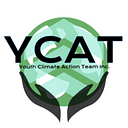Causes & Effects of Droughts and How to Prepare For Them
While natural disasters like avalanches and floods only occur in certain areas, droughts can appear in nearly every part of the United States, making them an important crisis for everyone to be educated on.
Causes of Droughts
Because of climate change, reduced rainfall is becoming more frequent. Since droughts are defined by water scarcity, reduced rainfall is one of the most common catalysts for this occurrence. In places with higher overall temperatures, droughts become more severe. High heat and lack of water accelerate the process of water evaporation from the soil, which prevents agricultural development. In turn, the decrease of vegetation in an area worsens the effects of the drought because plants are essential to the water cycle. Without plants, a large amount of water cannot return to the atmosphere, which reduces the precipitation in the area affected. Plants also perform photosynthesis, a process that is vital to the carbon cycle. The loss of vegetation causes more carbon dioxide to be trapped in the atmosphere, contributing to global warming and an overall worsening climate. So what does this all mean? Droughts and their subsequent effects create a vicious cycle that continues to worsen with each chain reaction.
Effects of Droughts
The loss of vegetation in droughts not only poses a threat to the carbon cycle, but it also creates water supply issues and food insecurity. Downward trends in vegetation can create food deserts in places affected by droughts. Additionally, drier soil absorbs runoff much faster than rain can replenish bodies of water. One of the prime examples of this in the United States is the Colorado River. Around 40 million Americans depend on this water source, leading to overuse. This, in addition to the warming climate and Colorado’s historic drought of over two decades, has resulted in the river drying up. The evaporation of entire lakes and rivers becomes a real threat with climate change.
Preparing for Droughts
The best way to prepare for a drought is to conserve water. At home, you can find alternative uses for your water, consistently check for leaks, and select appliances that are water efficient. In your lawn or garden, do not over fertilize, and ensure that water from sprinklers lands on shrubs and grass rather than the pavement to reduce waste. During a drought, indoor conservation methods include: taking shorter showers, turning off the tap when you are not actively using it (while shaving, brushing your teeth, etc.), and hand washing your dishes. For lawn care during a drought, only water in the early morning or at night, when temperatures are cooler, and reduce runoff by watering in short sessions for more effective absorption.
